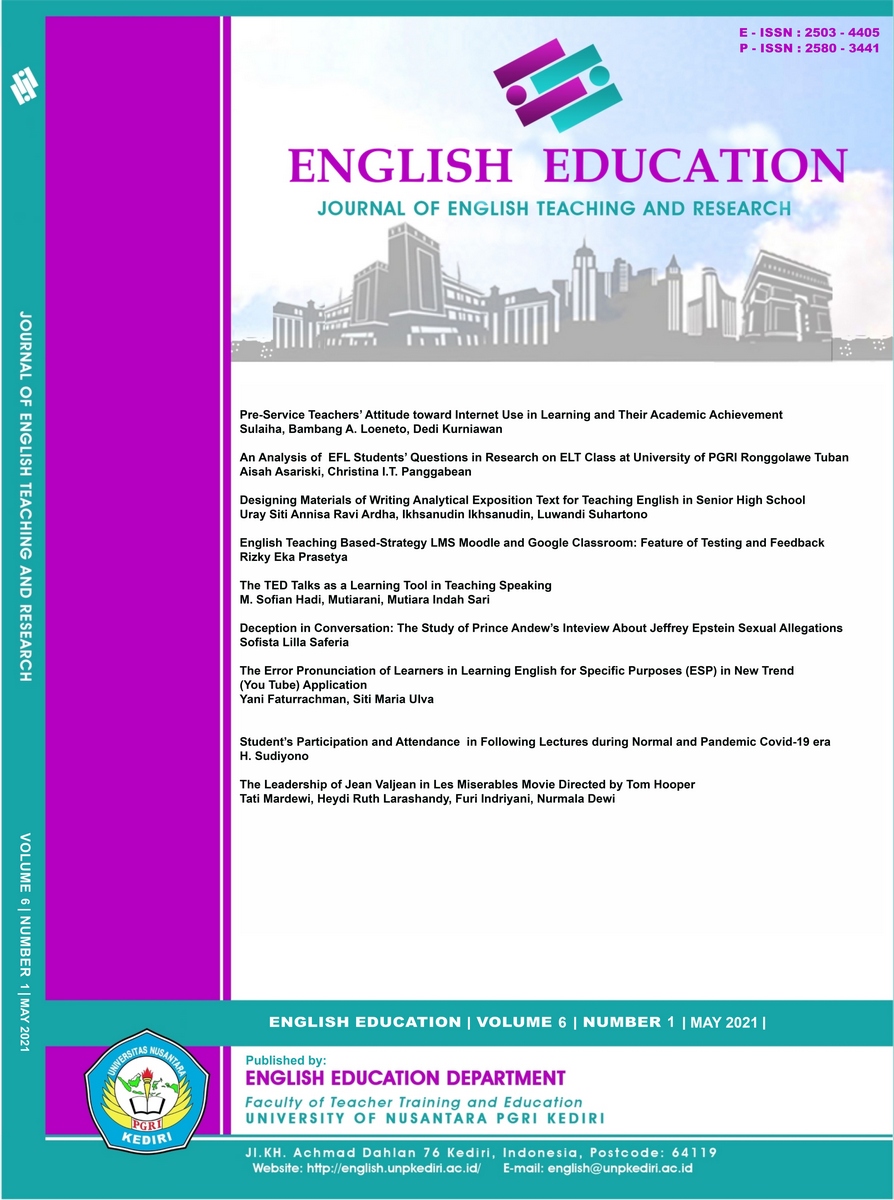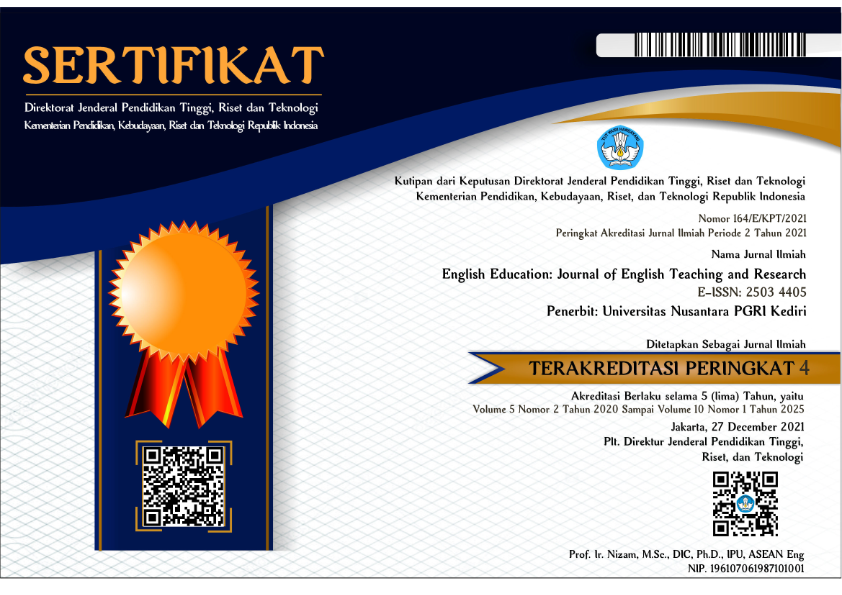Designing "Materials of Writing Analytical Exposition Text (MOWAET)" for Teaching English in Senior High School
DOI:
https://doi.org/10.29407/jetar.v6i1.15395Keywords:
Development Research, Materials of Writing Analytical Exposition Text (MOWAET), Analytical Exposition TextAbstract
Analytical exposition text is one of the texts studied by eleventh-grade students, and they are asked to produce the analytical exposition text by themselves. However, they faced some difficulties that impede their teaching and learning of making the analytical exposition text. This research aimed to design Materials of Writing Analytical Exposition Text (MOWAET) as a supplementary teaching material to support teaching and learning analytical exposition text. This research was developmental research and applied ADDIE as the procedure to design the materials. Still, there were only three implemented phases in this research: analyzing, designing, and developing. MOWAET was the completed design product for teaching-learning analytical exposition text. The researcher interviewed an English teacher of SMA Negeri 4 Pontianak to do the analyzing phase. MOWAET was created by using PowerPoint and Animaker as the supporting software. The researcher used an internal evaluation to ensure that the product is usable in the development phase. The internal evaluation phase showed that MOWAET met all the criteria, including the objectives, the content, and the media option. Shortening, it was found that the materials of writing analytical exposition text (MOWAET) are usable to support teaching and learning analytical exposition text.
Downloads
References
Andresen, B. B., & Brink, K. (2013). "Social Learning Technologies: The Introduction of Multimedia in Education." Moscow: UNESCO Institute for Information Technologies in Education.
Branch, R. M. (2009). "Instructional Design: The ADDIE Approach." In Springer.
Chwan Ang, Tse, and Mohamd Mariam. 2014. "A Study of Visual Design in PowerPoint Presentation Slide and Its Relationship with Postgraduate Learner Engagement and Satisfication." 78(18):91–96.
Harvey, L. (2004). Analytic Quality Glossary, Quality Research International, http://www.qualityresearchinternational.com/glossary/
Maulana, Aziz, and Education Faculty. 2013. "Designing 'E - Pon' To Teach Narrative Text in Senior." 1–10.
Ramadanti, Rika Maudy, Urai Salam, Zainal Arifin, and Education Faculty. n.d. "Designing the p.a.t Alphabet to Support Teaching Writing Descriptive Text." 1–15.
Reddi, U. V., & Mishra, S. (2003). "Educational multimedia: A Handbook for Teacher Developers." In Educational Multimedia: A Handbook for Teacher Developers. http://cemca.org/emhandbook/edmul_full.pdf
Richards, J. C., & Rodgers, T. S. (2001). "Approaches and methods in language teaching." https://doi.org/10.1037/014836
Downloads
Published
Issue
Section
License
Authors who publish with this journal agree to the following terms:
- Copyright on any article is retained by the author(s).
- The author grants the journal, the right of first publication with the work simultaneously licensed under a Creative Commons Attribution License that allows others to share the work with an acknowledgment of the work’s authorship and initial publication in this journal.
- Authors are able to enter into separate, additional contractual arrangements for the non-exclusive distribution of the journal’s published version of the work (e.g., post it to an institutional repository or publish it in a book), with an acknowledgment of its initial publication in this journal.
- Authors are permitted and encouraged to post their work online (e.g., in institutional repositories or on their website) prior to and during the submission process, as it can lead to productive exchanges, as well as earlier and greater citation of published work.
- The article and any associated published material is distributed under the Creative Commons Attribution-ShareAlike 4.0 International License








 Article template
Article template



